#Chinese Calligraphy
Text
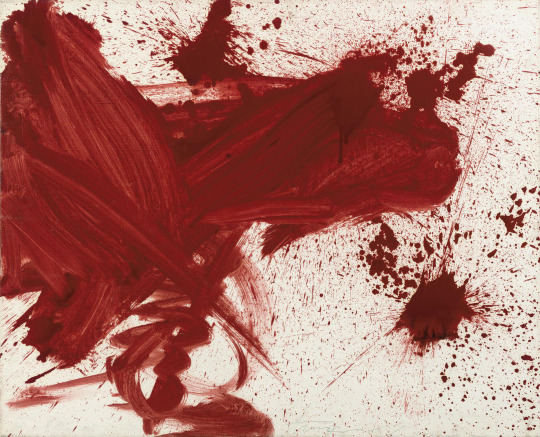
Walasse Ting: Red Chinese Calligraphy (1961)
2K notes
·
View notes
Text

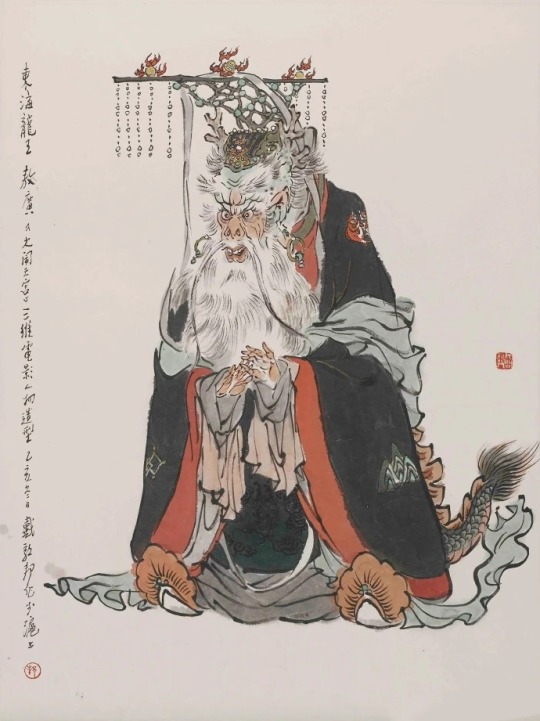
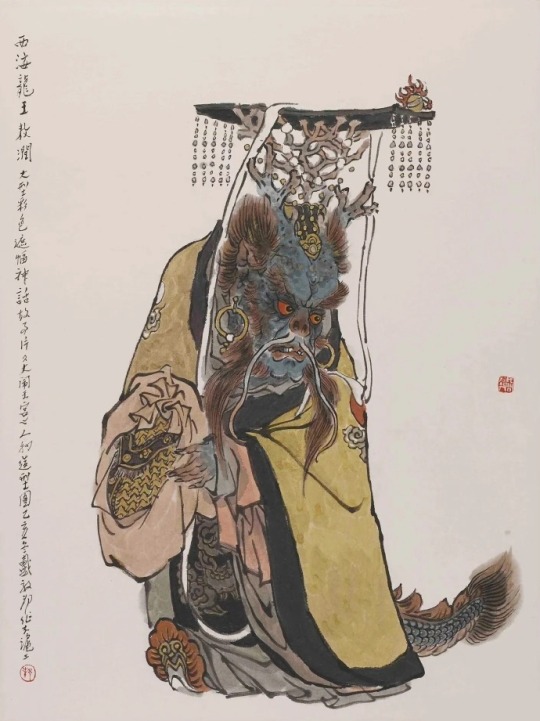
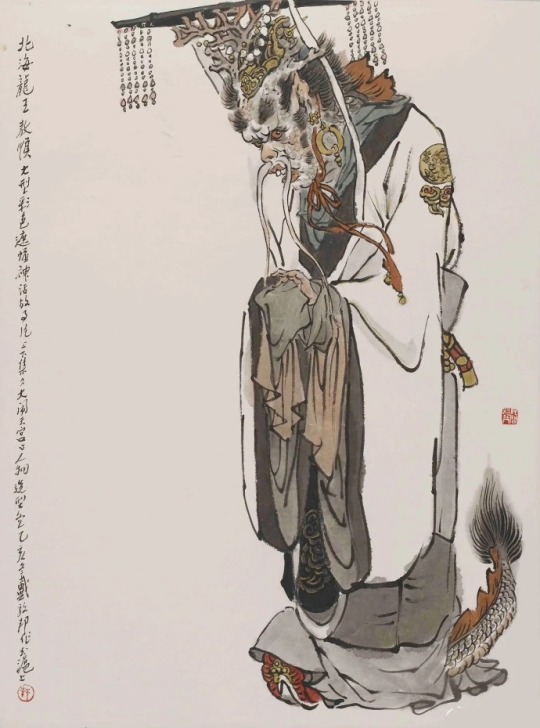
Dragon Kings of the Four Seas
Renowned Shanghai painter’s Dai Dunbang (戴敦邦) 20th century illustration for the Chinese Ming dynasty classic “Journey to the West” (《西遊記》) attributed to Wu Cheng'en (吳承恩).
#chinese art#ancient china#chinese culture#chinese painting#chinese calligraphy#chinese ink#ink painting#watercolor#dragon#dragon art#mythical creatures#chinese mythology#mythological creatures#journey to the west#chinese literature#dragon king#Dai Dunbang#西遊記
762 notes
·
View notes
Video
chinese calligraphy and typography (font: 宋体) by 闲人笔寄
3K notes
·
View notes
Photo

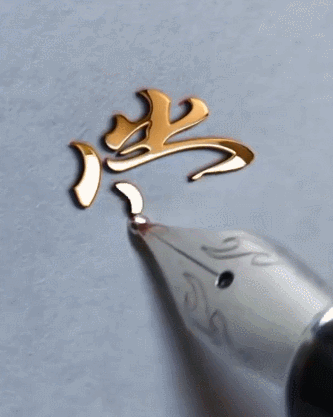
Gold Chinese calligraphy ✒️
#calligraphy#chinese calligraphy#gold#pen#stim#stim gif#stimblr#stim blog#sensory#sensory gif#stimmy#my gifs#100#500#1000
4K notes
·
View notes
Photo
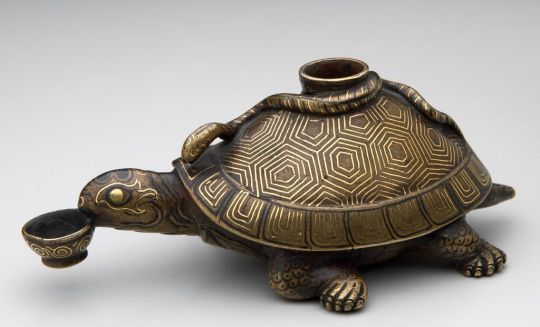
Tortoise-Shaped Water Dropper, 17th century. Used in traditional Chinese calligraphy for adding water to ink or paint in controlled droplets. Medium is bronze with gold and silver inlay.
(Source: collections.artsmia.org)
#tortoise#water dropper#vessel#calligraphy#chinese calligraphy#17th century#chinese design#decorative arts#bronze#gold#pattern#ornament#cc0#brown#yellow
3K notes
·
View notes
Text
Random Stuff #12: What is Simplified Chinese?
For people like me who grew up speaking and using Chinese in day to day life, the vast majority of us have at least a basic understanding of what Simplified Chinese is, but it wasn’t until some days ago when an English speaker asked me “what is Simplified Chinese?” that I realized not many people here understand what Simplified Chinese is. So, I’ve gathered some misconceptions I’ve encountered both in real life and online, and I will try to answer them in a concise but factual manner.
But first, let us talk basics. There are three things we must cover first before going into this topic. The first is the fact that both Simplified Chinese (简体中文) and Traditional Chinese (繁體中文) used today are modern standardized systems of written Chinese, as in both were compiled within the past 100 years or so (modern Simplified from 1935-1936, then again from 1956 and on; modern Traditional starting from 1973), and the two currently widely used versions of both systems were officially standardized in the past 50 years (modern Simplified current version standardized in 2013; modern Traditional current version standardized in 1982). However, since simplified characters already exist in history (called 简化字/簡化字 or 俗体字/俗體字/”informal characters”), and “Traditional Chinese” can be taken to mean “written Chinese used in history”, in this post I will use “modern Simplified/Traditional Chinese” or “modern Simplified/Traditional” when referring to the currently used modern standardized systems.
Second is the evolution of written Chinese. Usually when this is taught, instructors use examples of how certain characters evolved over time, for example one might encounter a linear diagram like this in Chinese class:

(Original picture from Mandarinpedia)
However, this diagram only gives a very general idea of how characters evolved from more picture-like logograms to the more abstract symbols we call characters today, and does not reflect the complexity of this evolution at all. To get into these details we will need to talk about Chinese calligraphy. In terms of the evolution of written Chinese, Chinese calligraphy--all those scripts like oracle bone script (甲骨文), bronze/Jinwen script (金文), Seal/Zhuan script (篆书/篆書), Clerical/Li script (隶书/隸書), Regular/Kai script (楷书/楷書), etc--they aren’t just calligraphy fonts, but actually change the way characters are written, and are representative of the commonly used forms of written Chinese at different points in Chinese history, as in the appearance of a certain script on a historical artifact can actually be used to estimate how old the artifact is. Below is a (very) rough timeline of when each script appeared and when they are most popular:
Oracle bone script/Jiaguwen (甲骨文): Shang dynasty (~1600 BC-1046 BC)
Bronze/Jinwen script (金文; includes Large Seal script/大篆): Western Zhou dynasty (~1046 BC-771 BC)
Seal/Zhuan script (篆书/篆書; sometimes called Small Seal script/小篆 or Qin script/秦篆): compiled in Qin dynasty by chancellor Li Si/李斯 around 221 BC, was the official script in Qin dynasty (221 BC-207 AD); popularity went down after Qin dynasty but was still in use for ceremonial purposes like official seals (the archaic meaning of 篆 is “official seal”, hence the English name); still in use today in very specific areas like seal stamps, calligraphy, logos, and art.
Clerical/Li script (隶书/隸書): appeared in Qin dynasty, became the main script used in Han dynasty (202 BC-220 AD); popularity went down after Han dynasty but was still in use; still in use today in specific areas like calligraphy, inscriptions/signatures on traditional Chinese paintings, logos, and other art.
Regular/Kai script (楷书/楷書): appeared in late Han dynasty, became the main script used in Tang dynasty and has been popular ever since (618 AD-present).
(Note: there are other calligraphy scripts like Semi-Cursive script/行书/行書 and Cursive script/草书/草書 that were never mainstream yet were also significant, especially in the case of modern Simplified Chinese, but I will mention them later so this won’t become too confusing)
So if we plug the information from the very rough timeline above into the linear diagram, it becomes this:
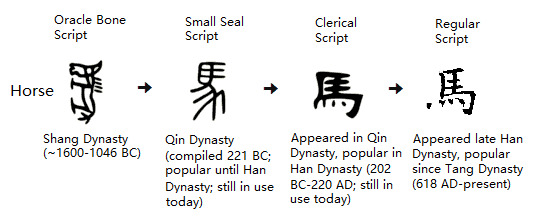
But wait! There’s even more! Because there is a thing called variant Chinese characters/异体字/異體字, which basically means that there have been multiple ways in which a character can be written (“one character, many forms”/一字多形), and these can come about as a result of homophones, personal preference of historically significant people, historical trends, mistakes in the past that stuck around, or the result of stylized scripts like Cursive script/草书/草書, which simplifies and connects strokes in a liberal manner. The reason Cursive script is important here is because of the logographic nature of written Chinese, meaning the simplifying or connecting of strokes actually changes how the character is written. Because of this, 马 and 馬 were forms that have already existed before modern Simplified and modern Traditional were compiled. A diagram that takes variations and evolution into account should look something like this:
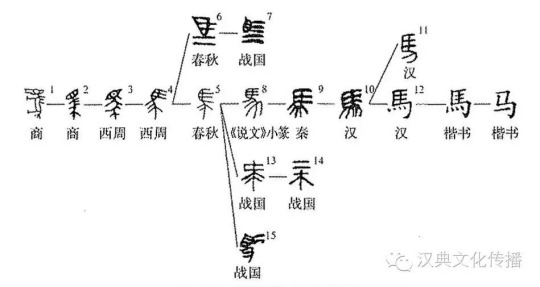
And since the above diagram did not take Cursive script into account, here’s another picture of a myriad of scripts/fonts (not in chronological order) that includes 馬 in Cursive script (mostly on bottom left):
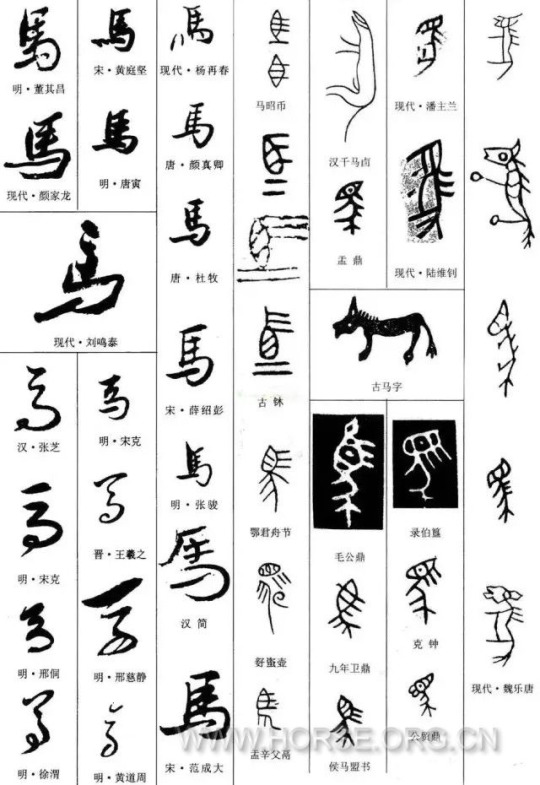
Now you may have an idea of where modern Simplified and Traditional Chinese came from: they are both compiled from existing variants. Since both modern Simplified and modern Traditional are supposed to be standardizations of written Chinese, they each set a single variant for each character as the “standard”. Modern Traditional Chinese kept the more historically mainstream 馬, and modern Simplified Chinese substituted it with the simpler variant 马. Taking all of this into account but still keeping it concise for our topic here, our linear diagram from the beginning should be modified to look like this:
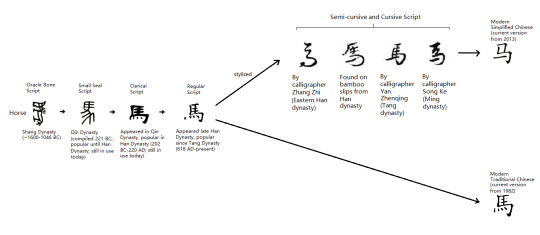
And that’s just an example of a single character. This evolution diagram can differ depending on the character too, due to there being other rules for simplifying characters. This is why standardizing written Chinese is an immense amount of work, but once standardized, the written language will be streamlined and much easier to use in communication.
Finally, we are ready to clear some misconceptions.
---------------------------------------------------
About Common Misconceptions Regarding Modern Simplified Chinese:
“Simplified Chinese replaced all Traditional Chinese characters”. Untrue. Modern Simplified Chinese only standardized 2274 of the most used Chinese characters and 14 radicals with simpler variants. That’s really all there is to it. For reference there are a total of about 60,000 Chinese characters, and about 3,500 of these are deemed to be often-used characters; so only ~3.7% of all Chinese characters and ~65% of often-used Chinese characters are simplified in modern Simplified Chinese. Play around with any online tool that can switch between modern Simplified and modern Traditional, and you will find that many characters stayed the same.
“Simplified Chinese is the opposite of Traditional Chinese”. Untrue. Modern Simplified Chinese is just a simplified and standardized system of written Chinese. Modern Simplified Chinese and modern Traditional Chinese are not “opposites” of each other at all, just different standardized systems serving different purposes. Modern Simplified was compiled with ease of use in mind, since Traditional characters can be time-consuming to write, for example imagine writing 聲 (sound) when you can just write 声 instead. Also back when Simplified was being introduced to the public, a huge part of the population was illiterate, especially farmers, poor people, and women, so Simplified Chinese was a great way to quickly educate them on reading and writing, and to improve efficiency in all aspects of life. Knowing how to read and write is key to education, and education is a must if people's lives were to be improved at all.
“Simplified Chinese is Mandarin”. Untrue. Mandarin is a spoken dialect that came from Beijing dialect, and both modern Simplified and modern Traditional Chinese are modern standardized systems of written Chinese. One concerns the written language and the other concerns a spoken dialect.
"Simplified Chinese was invented by the Communist Party". Untrue. As mentioned before, most characters used in modern Simplified Chinese are already present in ancient texts, artifacts, and inscriptions as variants. Apparently the only character simplified by PRC was 簾 (blinds/curtain), which became 帘 in modern Simplified Chinese. History wise, Republic of China was the first to start compiling Simplified Chinese in 1935 and introducing it to the public, but this was called off after 4 months. PRC modified and built on the original plan, and introduced it to the public again starting from 1956.
"Simplified Chinese is to Traditional Chinese as Newspeak is to English in 1984". Completely untrue. Modern Simplified Chinese is just a simplified way to write commonly used Chinese characters and does not alter the meaning of the characters. There are some Traditional characters that are combined as one simplified character in modern Simplified, but the meanings are not lost or altered. For example, 發 fā (development) and 髪 fà (hair) are combined as 发 in modern Simplified, resulting in 发 having 2 different pronunciations (both fā and fà), and each of these pronunciations carrying their original meaning. The meaning of neither 發 nor 髪 was lost, 发 will just have a longer dictionary entry.
"Simplified Chinese is a huge change from Traditional Chinese". Only partly true in that it is a change, but it is a change justified by the evolution of written Chinese throughout history. The origin of most modern Simplified Chinese characters come straight from history itself, since many characters had alternative ways in which they were written (sometimes for convenience), for example these characters below. Each row contains different forms of a single character (smaller characters indicate what time period these variants are from; ex: 汉碑 means the variant is from a Han dynasty inscription).
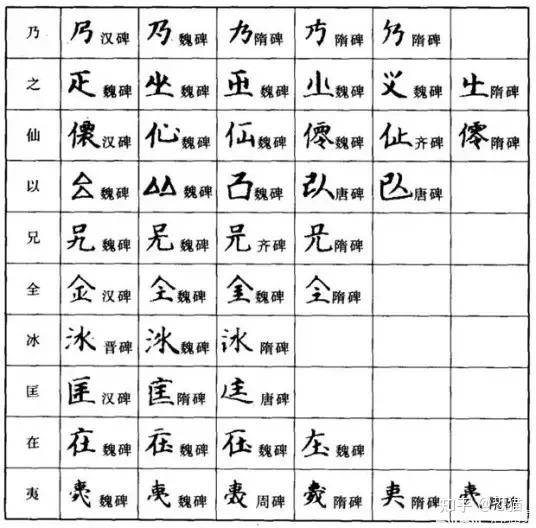
In reality, written Chinese has always been standardizing itself. Less-used variants become forgotten over time, sometimes only rediscovered through archaeology. Besides, effective written communication does partly rely on standardization of the written language (imagine everyone writing in the various variants...how horrible would that be?). Modern Simplified just took this one step farther and made some characters easier to write.
“Traditional Chinese is no longer used in Mainland China”. Untrue. Modern Simplified is the commonly used form in Mainland China, but Traditional is still used in a variety of places, such as on store signs/brand logos, particularly for stores/brand that are old. For example the old Beijing brand 天福号 below (est. 1738). On their logo, 天福号 is written as 天福號 from right to left, which is the traditional way of writing horizontally.
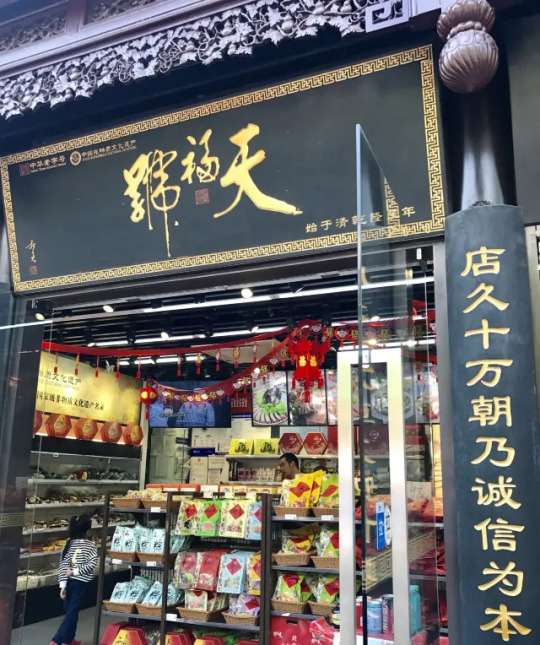
Traditional Chinese is also used in the logos for many universities in China:

Another way in which Traditional Chinese is commonly used in mainland China are personal seal stamps. Often times when people carve seal stamps for personal use (for example showing ownership on artwork they created or collected), they would put their name/courtesy name/nickname on the seal stamps in Zhuan/篆 calligraphy font, and Zhuan font use Traditional Chinese. Of course, the ways in which Traditional Chinese is still used in mainland China isn’t restricted to these two examples here. There are other places where Traditional Chinese is still used, such as traditional paintings/国画, calligraphy/书法, and many many more.
“People who grew up reading Simplified Chinese cannot read Traditional Chinese”. Depends on who you are asking. I grew up learning only modern Simplified, and I can read Traditional/modern Traditional Chinese just fine without having to actually learn it from anyone. Most people who grew up with Simplified Chinese should be able to read at least some Traditional without help. There are some people who say they can’t read Traditional without taking the time to learn it, but I doubt they’ve really tried, to be very honest.
---------------------------------------------------
And that’s it for the misconceptions!
My personal philosophy regarding modern Simplified Chinese and modern Traditional Chinese can be summed up as 识繁写简, or basically “know how to read Traditional and know how to write Simplified”. In a way, knowing how to read Traditional is a bit like knowing how to read cursive: a lot of history could be lost if we completely stopped using/learning about Traditional Chinese, but to meet the fast pace that modern life demands, I think modern Simplified Chinese is the more convenient choice for writing for day-to-day purposes. Since quite a few posts on this blog concern history, you will find that I usually use both Traditional Chinese and Simplified Chinese for historical things, since modern Traditional Chinese is closest to what people used in the past, and modern Simplified Chinese is more often used now. If it appears that I didn’t put modern Simplified and modern Traditional side by side, that usually means either the characters stayed the same and there’s no need for me to type the same thing out again, or the topic does not call for both to be shown.
Finally, the fun part. Here’s a Seal/Zhuan script calligraphy work by Mi Fu/米芾 (1051-1107):

Does something look familiar there?
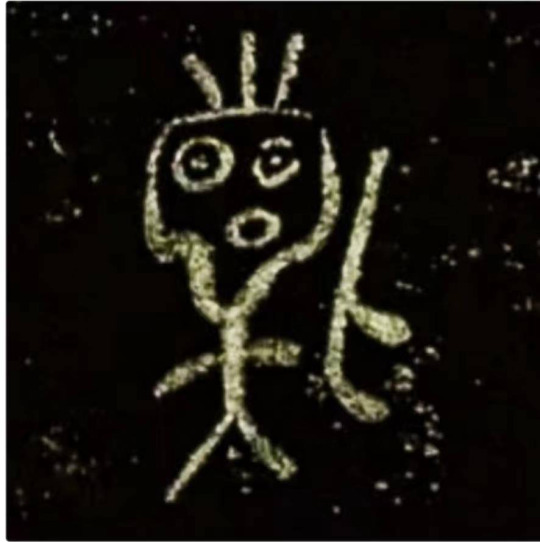
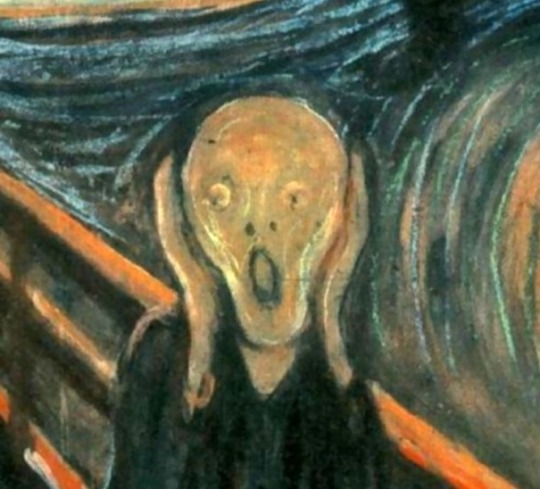
#simplified chinese#chinese language#language#written language#traditional chinese#chinese calligraphy#chinese history#random stuff#what is simplified chinese
990 notes
·
View notes
Text

The Lotus, Chinese and Arabic.
39 notes
·
View notes
Text
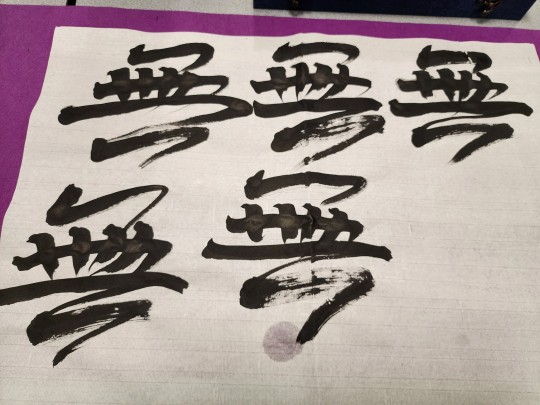
I'm taking a Chinese/Japanese calligraphy class this semester (it's one of the required electives I can take for my second major and/or minor) and this is some Semi-Cursive/Running Script I did yesterday, my first day of learning Semi-Cursivs, and I'm really proud of it! It's of the character 無, which means "nothing" and is the traditional form of the character 无!My professor and I are in agreement that this is My Style that I'm gonna be good at and it's my favorite style so I'm pretty happy about that.
(Please ignore the water droplet, I had just washed my brush and a drop from it landed on the page by accident)
15 notes
·
View notes
Text

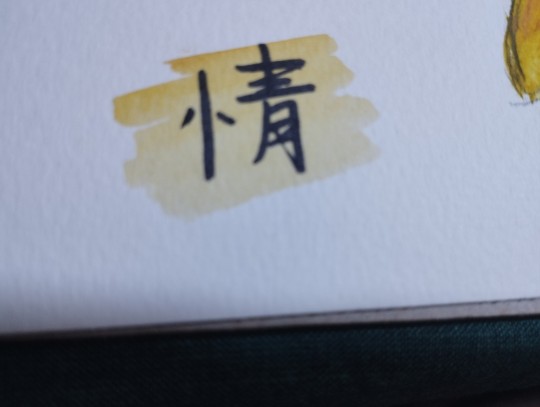


just having fun with paints + calligraphy
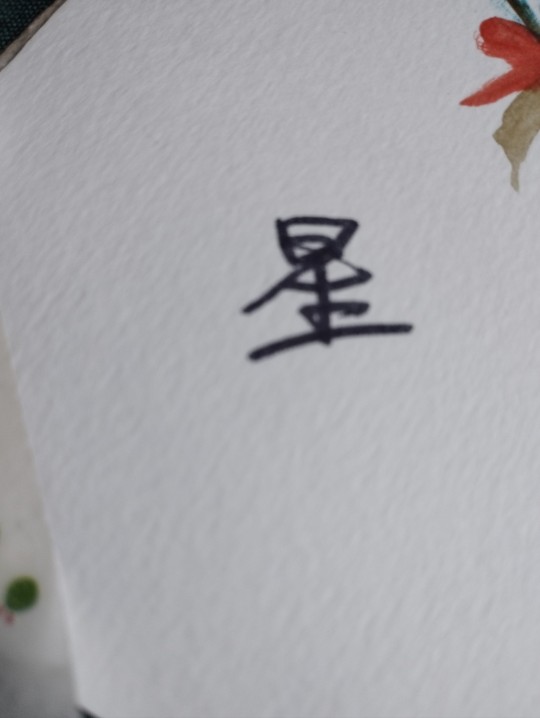
#calligraphy#paint#calligraphy practice#chinese language#japanese language#chinese calligraphy#japanese calligraphy#langblr#studyblr
19 notes
·
View notes
Text

So! I wanted to see if i could write in Japanese in a gothic-calligraphy-like hand.
(forgive the orange highlighter, it was the only chisel-tip writing ustensil on the entire floor)
epic reading below:
originally, this seemed like a challenge, for a few reasons:
English is very simple, so you are able to embellish a lot. Japanese is not, so you can't really embellish/if you do, they could be confused for other strokes and therefore other kanji.
Japanese has plenty of diagonal strokes, while English does not. And with the technique used in this sort of calligraphy, you can't really make them look very interesting.
And above all, In the english logo of Attack on Titan, they use a really cool gothic-like font, so i was interested to see how they did the Japanese logo, but it wasnt similar at all (not very interesting in its own sense either). Which made it seem like it's just not possible. Which made it more of a challenge. (also note that i have never watched or read aot):


Now, Japanese and English are two entirely different languages. Even just written in the blandest, most boring font with a ballpoint pen, they give off completely different vibes, aesthetically.
Typical/Traditional calligraphy for each also give off different vibes, though there are similarities:


However, some fonts/lettering/calligraphy can look pretty similar when effort is put in:


So, i decided to finally try it out for real today and totally not avoid my English assignment rather than simply attempting to doodle a word here or there half-heartedly.
also, i did do some embellishments, which may make it hard to read if you actually know Japanese, but it does that in English too so lol. I did refrain from doing too many, though.
So, to compare the Japanese to the English in the gothic font side by side, it'd look like this:


(i edited the colouring bc orange highlighter is just way to hard to read). Now, the Japanese is pretty unreadable compared to the English, but I figured that was in-part due to the English having space and lower+upper case, so i did another English version where everything is capitalized:

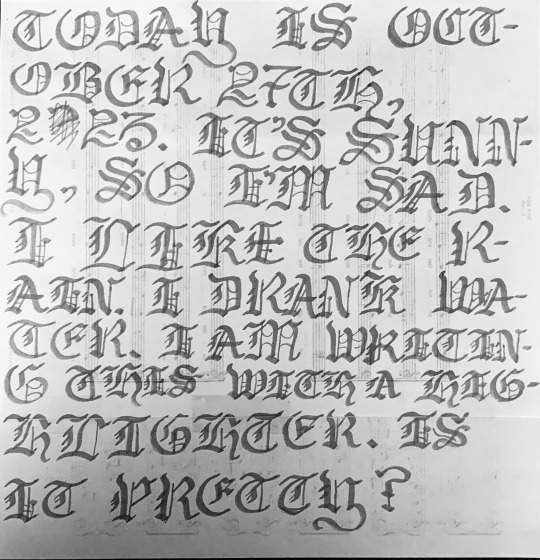
(i ran out of room and had to tape a second paper to it haha). But as you can see, pretty hard to read to (and it would be even harder without the spaces).
So Anyways, do you think the gothic Japanese gives off similar vibes to the English gothic?? how'd i do?
#long post#calligraphy#gothic calligraphy#japanese calligraphy#chinese calligraphy#font#fonts#handwriting#unityrain.txt#unityrain.art
28 notes
·
View notes
Text


Blue girls inked with Chinese calligraphy brushes 🖌️
Most painfully meticulous thing I've done in my life I'm ready to become a surgeon fr now.
#doodle#oc#traditional drawing#traditional art#traditional doodle#inking#digital art#ink drawing#chinese calligraphy brush#chinese calligraphy#blue#blue girl
22 notes
·
View notes
Text





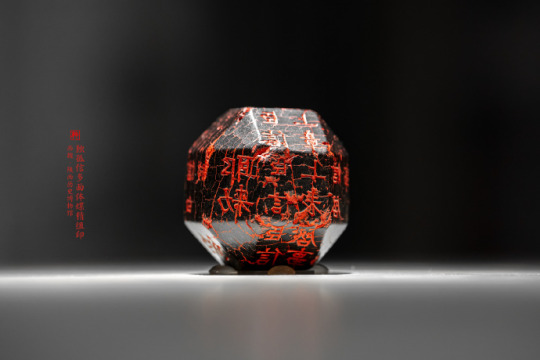
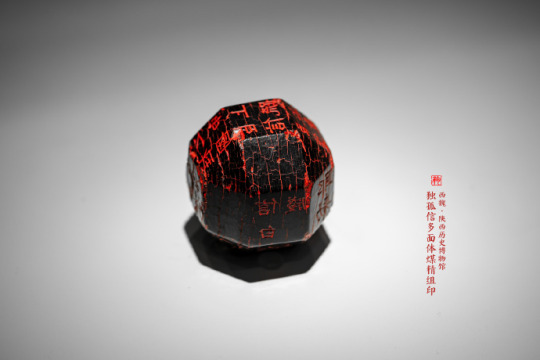

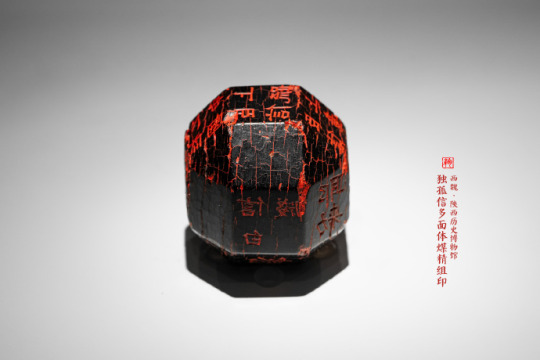
Jet-black Polyhedral Seal of The Western Wei General
This multi-faceted jet seal of the Western Wei dynasty, belonged to the famous General Dugu Xin (獨孤信). It has 8 edges and 26 sides: 18 square and 8 triangular ones. It is the ancient polyhedral seal with the largest number of facets.
Among them, 14 sides are engraved with inscriptions. The inscriptions range from one-character to five-character. The functionality is differentiated, including the use in official letters, orders, document labeling, etc.
The jet, a composite organic gem, from which the seal is carved, is known in China as “coal jade” (煤玉).
The total height of the object is 4.5 cm, the width is 4.35 cm, and the weight is 75.7 g.
The seal was accidentally discovered in 1981 by Song Qing, a student from Xunyang county (旬陽縣), Ankang, Shaanxi. While returning home from school, he picked up a weird object in the gravel on the roadside, which aroused his curiosity with its bizarre shape. Song Qing had no idea what it was. Having examined the inscriptions at home, he gave the find for examination to the local archaeological museum, where the artifact was considered not of particular cultural value.
The seal vegetated on the outskirts of the local exposition for another decade, until it was revealed and recognized by a prominent researcher Wang Hanzhang (王翰章) from the Xi'an Institute of Literature and History. On display in Shaanxi History Museum (陝西曆史博物館).
#ancient china#chinese culture#chinese history#chinese seals#seal#seals#calligraphy#lettering#chinese calligraphy#jet#carving#stone carving#gemstone#gems#gemstones#lignite#jet-black#Western Wei dynasty
272 notes
·
View notes
Text
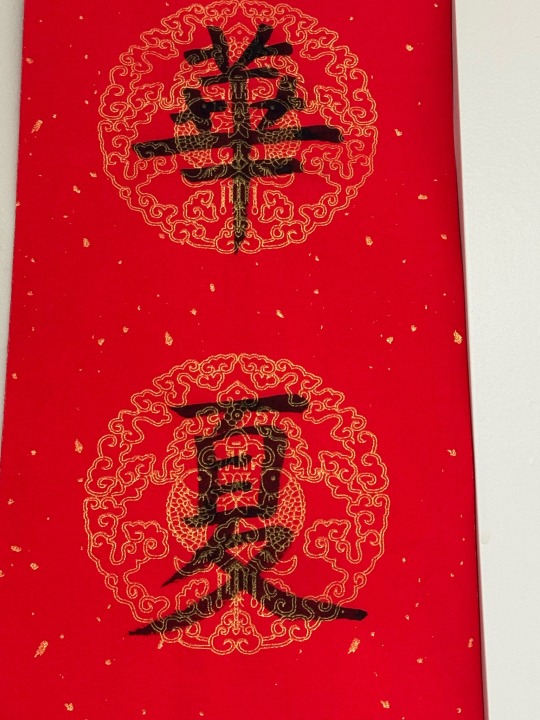
华夏 (hua2 xia4) that I wrote on my spring couplets this year
Huaxia is the ancient term for China and an alternative name to describe the Han people, the term has over 5000 years of history.
#chinese calligraphy#my art#wow an original post from me is a huge rarity nowadays#书法#毛笔书法#brush calligraphy#my calligraphy skill varies wildly between sessions this one was surprisingly good somehow#especially my 楷书 abilities they’re super inconsistent because I got obsessed with 瘦金体 and 行书#also I did grind the ink myself which is why it’s a bit watery the ink stick is super old lol
8 notes
·
View notes
Text
a compliation of my writing for all the poems we’ve studied in poetry club! i’m all caught up yay
#chinese poetry#chinese diaspora thoughts#chinese calligraphy#i play fast and loose with the word calligraphy because i haven’t had formal lessons
11 notes
·
View notes
Text

"may your heart's desires come true"
(written for me at the Confucius Institute event)
52 notes
·
View notes
Text
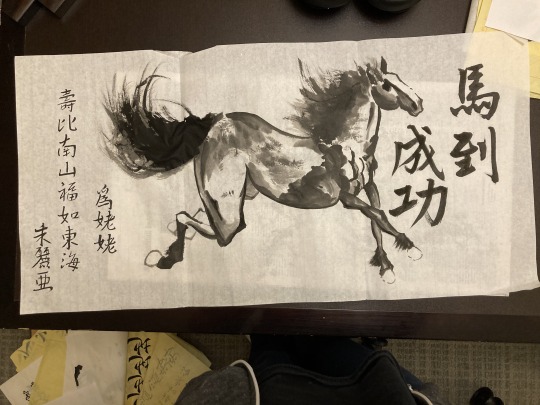
it may have taken til 1:30 am Christmas morning, but at last my Xmas gift for my grandma is finished
#calligraphy#mandarin#painting#why the fuck did I agree to make everybody’s Christmas gifts#chinese calligraphy#theres ink everywhere#There’s in on my face
7 notes
·
View notes